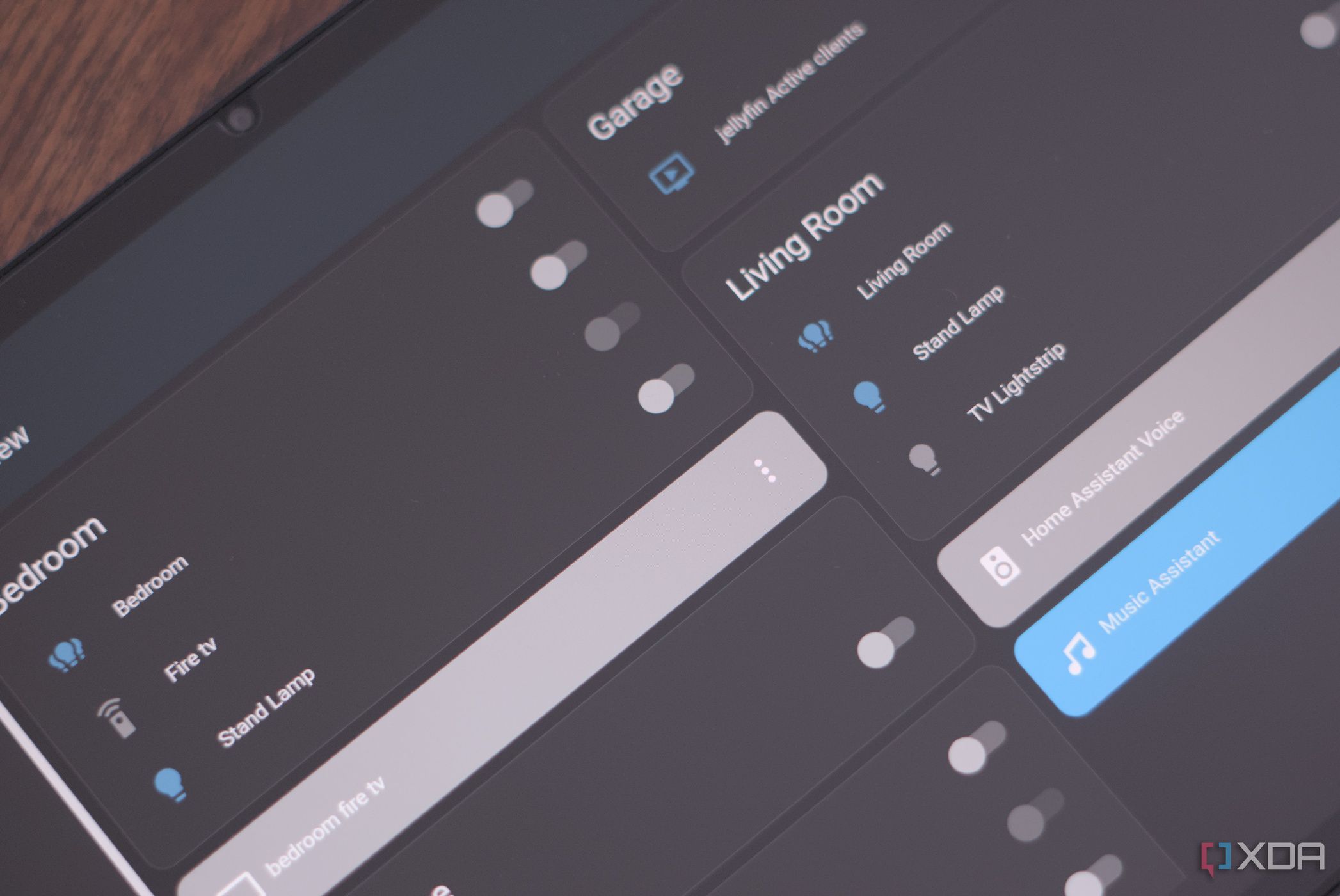Home Assistant is a powerful software suite that can automate just about everything inside your home. Since making the switch to Home Assistant (HA), I have been able to replace a few smart home devices and services. From Amazon Alexa to Spotify, here’s everything I have been able to use Home Assistant for, saving money and numerous headaches. The best part about building out a smart home is being able to pick and choose which routes to take.
Amazon Alexa and Google Assistant
“Alexa, pack your bags”
Replacing Amazon Alexa was one of the best decisions for my smart home. Alexa and other assistants aren’t terrible and I do believe they have a place in a smart home, but once you’ve discovered the power of Home Assistant and localized LLMs, there’s no chance of going back. That’s precisely what occurred in my smart home. I’ve steered clear of LLMs and running them from my home lab for some time but recently made the leap.
Since setting up Ollama, Open WebUI, and a few LLMs, I can leverage the power of AI through Home Assistant and enjoy using smart assistants within the HA ecosystem, taking full advantage of all the available integrations and plugins. Not only is it possible to control lighting and other devices with simple commands, but the LLM can be used for more advanced configurations, not to mention your privacy is safeguarded.
Philips Hue Bridge
A road to nowhere
To use Philips Hue bulbs, you’ll need a Philips Hue Bridge. Starting from scratch with your first smart home products, it may not seem like such a big deal, but once you start venturing outside the Philips ecosystem, you’ll learn why anything proprietary is a bad way to do things. That’s why Home Assistant is great for Philips Hue bulbs. All I needed to do was add a Zigbee receiver dongle to Home Assistant running on a Proxmox server and everything was connected.
Now, instead of relying on a dedicated hub to connect all lighting equipment, sucking up power and requiring a LAN port, Home Assistant controls everything. It is worth noting that I have lost some of the benefits that come with the Philips Hue Bridge, including scenes. However, this is a minor concern since I didn’t really use them with the bridge and can find other ways to achieve something similar.
What’s more is by using a standard dongle, I can use other branded hardware. This not only saves me money but allows me to make Home Assistant notably more versatile with new functionality.
Countless smart apps
Consolidating all sockets
Like the Philips Hue Bridge, Home Assistant also allowed me to remove Tuya, Smart Life, and all other apps from my mobile devices. Have you ever wished to toggle a mart socket but ended up launching the wrong app, only to waste precious seconds hunting down the setting? That’s where routing everything through Home Assistant can make your life much easier. I did just that with integrations and direct control, and can now control every smart plug from the HA dashboard.
Most of the hardware governed by these apps can either be linked through integrations using credentials for the services, or through ESPHome, MQTT, and other means. Using local integrations frees up all your mobile devices and makes it easier to manage everything. This way I can link in smart doorbells, locks, ventilation, thermostats, and even IP cameras through Frigate to the same platform for a truly smarter home.
Ring alarm system
Protect the home at all costs
Ring offers a comprehensive DIY alarm system, capable of securing your home through the use of cameras and sensors. Connecting them to the primary station, which also acts as an indoor siren, it’s possible to get a solution up and running within an hour. It can also hook up to Home Assistant, thanks to an available integration, but it’s not perfect. HA can only read video feeds and other parts of the system.
Taking control of specific sensors and other parts of the system is out of the question, unfortunately. But there’s light at the end of the tunnel as Home Assistant can act as a Ring alarm system with standardized parts and the use of Alarmo and Zigbee hardware. It’s a great alternative for Ring and other services, especially if you’d prefer to keep all your data inside the LAN, unless option to open up external access.
I plan to do just this once I eventually complete a home move. Ring will be replaced with Alarmo and some Zigbee sensors, allowing Frigate to handle all the IP camera recording with everything fed into Home Assistant.
Upgrade your home with HA
We bang on about Home Assistant like it’s going out of fashion, but that’s simply because it’s so versatile and an absolute joy to use. As a free platform, there’s almost no reason to get an instance up and running at home and have a play around with all the various integrations and functionality. If you’re considering any form of home lab and self-hosting, Home Assistant is a great place to start.
Home Assistant
